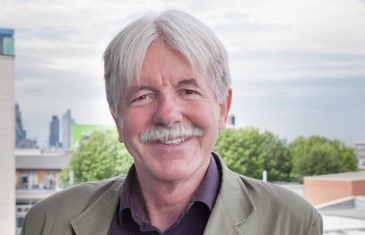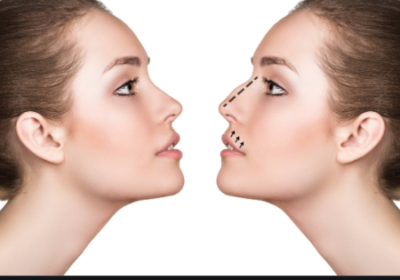Most of us learned as schoolchildren – George Washington never smiled in his portraits out of embarrassment from his distorted dentures. Nevertheless, his wooden and ivory prostheses wouldn’t compare to the advancements achieved in modern dentistry, it is still historians a dispute amongst historians that Washington’s cogitative countenance doesn’t come from shame of poorly esthetic dentures, but from an ongoing cultural taboo of passing a smile when a portrait.
Modern-day dentistry has transformed extensively in the past 4 centuries, but the milestones in the domain did not come entirely from evolving technology, materials and analysis. The laughter is now in sync with joy and excitement, and many people are willing to walk a mile to have a perfect smile. Yet from starting to end in the ancient times, the smile was akin to foolishness, irrational emotions, and deceit. It’s not very shocking that words ‘smile’ and ‘smirk’ in English language share the similar Old Norse origin.
Well, it wasn’t until the nineteenth and twentieth century that smiling became a widespread, popular cultural episode. According to historian Colin Jones, a professor of art history at Queen Mary University of London, the point of inflection regarding the public opinion of smiling came about with a controversial self-portrait of Madame Elisabeth-Louise Vigée Le Brun, a French artist. In her painting, Le Brun, a young mother, portrays herself smiling ever so slightly, showing the incisal edges of her maxillary incisors.
“It caused something of a misconduct, and people were roped in terror,” Jones said in an interview with Slate magazine. “It was an innovation that was most unwelcome. Nobody had been doing the task since time immemorial. If teeth of a person showed up in a portrait, it was usually because the person being portrayed was plebeian…or not in full command of their rational faculties.”
Jones argues that throughout Western Europe, the idea of showing one’s teeth portrayed carnal desire, viciousness and a teenager’s stupidity. Circus performers, gamblers and musicians are depicted in Renaissance and Baroque art with giddy, smiles “on the margin of respectability.” In his most recent book, “The Smile Revolution,” Jones writes, “The white-tooth smile would have been unthinkable without major new developments taking place at the same time in dentistry, surgery and medicine. Late 18th century Parisian dentistry was the envy of the world. The city had generated new ways of thinking about teeth, and new ways of presenting them to the world.” Le Brun’s “Self-portrait” of 1786 comes during a time of great improvements in dental care, but also greater time social reform, philosophic enlightenment, and the burgeoning idea of individualism. Smiling in public, let alone perpetually in a portrait, defied traditional puritanism and the aristocratic contempt that the Enlightenment and similar movements so eagerly rejected.
Beginning in the 18th century, dentistry started to evolve from a trade of tooth pulling into a field of science. French surgeon Pierre Fauchard published in 1723 “The Surgeon Dentist,” a book that mapped out the anatomy of the oral cavity and documented techniques in restorative dentistry. Throughout the 1700s, dentistry made steady progress with the developments of root canal therapies, gold post and crown casting, and breakthroughs in dental porcelains. By the end of the 1800s, dentistry took shape into what it is today, with advancements in anesthesia, dental amalgams, toothpastes and mechanized hand pieces. Along with the explosion of dental innovations, smiling became more and more prominent in art and culture, according to Jones.
“If the emergence of the cult of sensibility in Enlightenment Paris was crucial to changes in the facial regime, so too was the rise of modern dentistry,” Jones writes in his book. “The Smile Revolution was to prove as slippery and transient as the smile itself.”
Jones argues it’s curious that Enlightenment-age Europeans took an interest the appearance of their teeth, because “in the 18th century, city dwellers’ teeth were in worse condition than in any other period in human history, and this is mainly because of the invasion of sugar in the town dweller’s diet,” Jones said in a podcast for Slate.
The diet of the 18th century Western Europeans — not excluding George Washington and the American colonists — comprised of numerous ferment-able carbohydrates, including bleached flour and refined sugars from the Caribbean. Washington’s post-dinner ritual of “4-5 glasses of Madeira wine” and his love for fruit pies, according to “The President’s Cookbook,” certainly didn’t help his deteriorating pearly-whites either. By the time he was indurated in 1789, Washington had only 1 natural tooth left, said Susan Schoelwer, curator of Washington’s Mont Vernon.

Though he may have not participated in what Jones describes as the “Smile Revolution,” the revolution Washington waged against the British monarchy for the sake of liberalism draws similarities with the chain reaction set off by Madam Le Brun’s self-portrait, and dentistry is all the better for it. “The 1787 painted smile was merely the tip of a very much measurable and well-formed iceberg that already extended into literature and the arts,” Jones writes. “It had assumed added significance in social and political life, as we shall see, had come to constitute an overt critique of…monarchy and aristocracy.”







Recent Comments